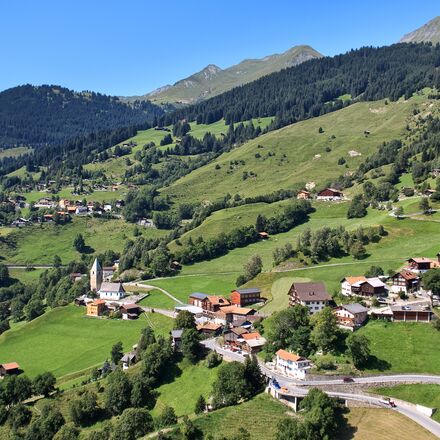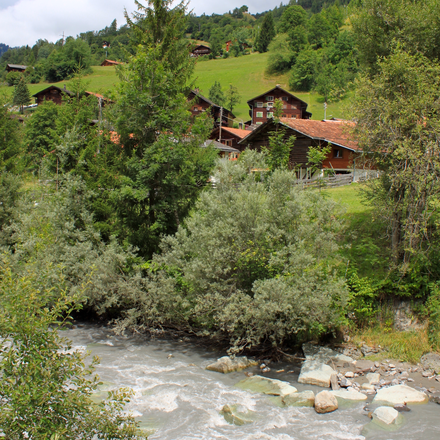- Arosa
- Discover
- Schanfigg Valley
- St. Peter-Molinis & Pagig
St. Peter-Molinis, Pagig & Tschiertschen
Characterized by natural forces and political power struggle

St. Peter Pagig & Molinis
The village with the double name is spread over different hamlets. The hamlet Fatschél lies above the villages of St.Peter and Pagig. It was a former Maiensäss which has now year-round residents. With the chair lift to the ski area Hochwang it has become an important starting point for winter sports people and summer hikers. There is a village shop including a post office in the centre right along the cantonal street in St.Peter. On your way to Pagig you pass the organic garden of Schanfigg with a direct sales point every Friday afternoon. Stroll through the garden and pick your favourite vegetables.

Molinis
In the old days Molinis was called „the Garden of Schanfigg“. Farmland and blossoming fruit trees embellished the place. Today, Molinis cultivates pome and stone fruits under the label Pro Species Rara. The village with its tanned wooden houses was able to keep its charme and is now a crossing point for hikers going from Litzirüti to Tschiertschen and St.Peter. During the summer season the welcoming barbecue areas along the Plessur river invite to stay and grill some sausages. Should you be surprised by summer rain or a winter storm, simply stop for a bite to eat at the Postbeizli in the centre of the village. The nostalgic post bus runs throughout the summer months.












